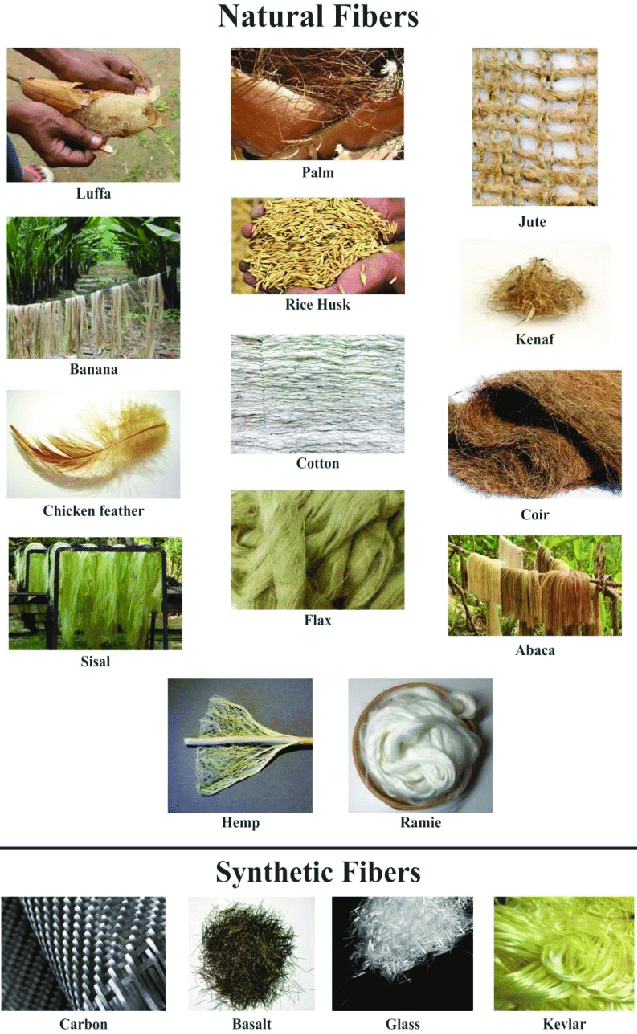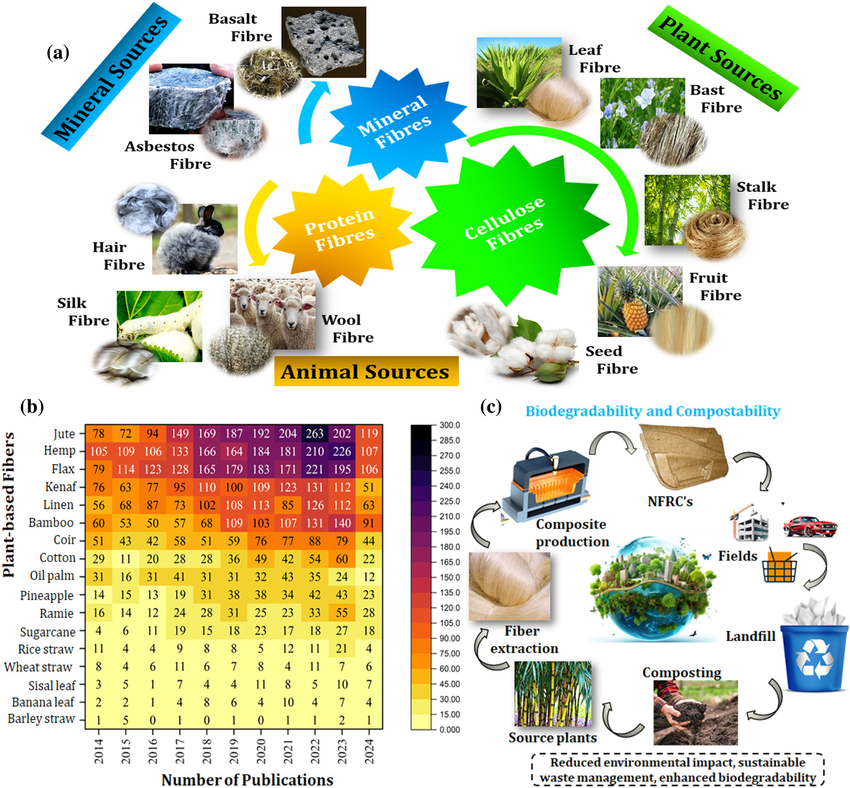In an era dominated by the need for sustainability, natural fibers have emerged as a cornerstone of eco-friendly alternatives in various industries. From textiles to biocomposites, these fibers derived from plants, animals, and minerals offer numerous environmental and functional benefits. In this blog, we’ll delve into the fascinating world of natural fibers, exploring their types, benefits, and diverse applications, while highlighting why they are gaining traction in the modern world.
What Are Natural Fibers?
Natural fibers are materials that are sourced from nature, typically derived from plants, animals, and minerals. These fibers have been used for centuries in traditional applications such as clothing, ropes, and mats, and in modern times, their uses have expanded to a wide variety of innovative applications in textiles, construction, automotive, and packaging industries.Natural fibers are typically biodegradable, renewable, and more environmentally friendly compared to their synthetic counterparts, which often rely on petroleum-based materials. As sustainability becomes increasingly important across industries, natural fibers present an opportunity to reduce dependence on non-renewable resources and minimize environmental impact.
Types of Natural Fibers
Natural fibers are generally categorized into three main groups based on their origin: plant fibers, animal fibers, and mineral fibers.

1. Plant-Based Fibers
Plant-based fibers are the most abundant type of natural fibers, derived from various parts of plants such as stems, leaves, seeds, and fruits. These fibers are predominantly composed of cellulose, a complex carbohydrate that gives them strength and durability.
- Cotton: One of the most widely used natural fibers, cotton is soft, breathable, and comfortable. It is primarily used in the textile industry to make clothing, bed linens, and towels. Cotton is known for its excellent moisture-wicking properties and is one of the most sustainable options when grown under organic farming conditions.
- Flax (Linen): Flax fibers are derived from the stalks of the flax plant and are known for their strength and resistance to wear. Linen, a fabric made from flax, is highly breathable, moisture-wicking, and is often used in summer clothing and home furnishings.
- Hemp: Hemp is an incredibly versatile and sustainable fiber made from the stalks of the hemp plant. Known for its strength, durability, and resistance to mold, hemp is used in textiles, ropes, biodegradable plastics, and eco-friendly paper products. Hemp farming requires fewer pesticides and fertilizers, making it an environmentally friendly option.
- Jute: Jute is a coarse fiber derived from the jute plant, primarily used to make burlap, ropes, and sacks. It is highly biodegradable and often used for packaging, matting, and even in the construction of eco-friendly building materials.
- Sisal: This fiber is extracted from the leaves of the agave plant and is commonly used in the production of ropes, twine, and mats. Sisal is strong, durable, and biodegradable, making it a preferred choice for many applications.
2. Animal-Based Fibers
Animal fibers are derived from the hair, fur, or secretions of animals. These fibers are typically rich in proteins like keratin and are known for their softness, warmth, and versatility.
- Wool: Wool is one of the oldest and most widely used animal fibers. Sourced from sheep, wool is known for its insulation properties, making it ideal for cold-weather clothing like sweaters, coats, and blankets. Wool fibers have the ability to wick moisture away from the skin while maintaining warmth, even when wet.
- Silk: Silk is produced by silkworms and is highly valued for its luxurious texture, shine, and strength. Silk fibers are extremely fine and strong, and the fabric made from silk is often used for high-end clothing, upholstery, and bedding. It is also known for its natural hypoallergenic properties.
- Cashmere: Cashmere is derived from the undercoat of cashmere goats and is renowned for its exceptional softness and warmth. It is primarily used in luxury garments such as sweaters, scarves, and shawls. Due to its rarity and labor-intensive production process, cashmere is a high-end fiber.
- Alpaca: Alpaca fibers come from the South American alpaca and are known for their softness and insulating properties. Unlike wool, alpaca fibers are less itchy, making them suitable for those with sensitive skin. They are commonly used to make scarves, sweaters, and blankets.
3. Mineral-Based Fibers
Mineral fibers are naturally occurring fibers that are not derived from plants or animals but from minerals found in the earth. These fibers are less common than plant and animal fibers but have unique properties, particularly in terms of fire resistance.
- Asbestos: Asbestos fibers, once widely used for their heat-resistant and insulating properties, are now banned in many countries due to their harmful health effects, including cancer risks. However, asbestos remains an important example of mineral-based fibers that have historically been used in construction and automotive industries.
- Basalt: Derived from volcanic rocks, basalt fibers are an eco-friendly alternative to fiberglass. They are used for their heat resistance, durability, and non-toxicity. Basalt fibers are used in a variety of applications, including construction materials, automotive parts, and textiles.
Why Natural Fibers Are Important for Sustainability
Natural fibers offer a host of environmental advantages over synthetic fibers. Their primary benefits include:
- Biodegradability: Unlike synthetic fibers such as polyester and nylon, which can take hundreds of years to decompose, natural fibers break down relatively quickly in the environment. This reduces the accumulation of waste in landfills and contributes to a circular economy.
- Renewability: Natural fibers are derived from renewable resources like plants and animals. With proper management, these resources can be replenished each season, unlike synthetic fibers that rely on non-renewable fossil fuels.
- Lower Carbon Footprint: The production of natural fibers generally requires less energy and fewer chemical inputs compared to synthetic fibers. This results in a smaller carbon footprint and fewer greenhouse gas emissions.
- Support for Organic Farming: Many natural fibers, such as cotton, hemp, and flax, can be grown organically, without the use of harmful pesticides and fertilizers. Organic farming practices promote soil health, reduce water consumption, and help maintain biodiversity.
- Eco-Friendly Processing: Natural fibers often require fewer chemicals in their processing compared to synthetic fibers. For example, flax and hemp require minimal processing to convert them into usable textiles, making them an eco-friendly option.
Applications of Natural Fibers
Natural fibers are not only used in the textile industry but have found applications in many other sectors, including:
- Automotive Industry: Natural fibers like hemp and flax are increasingly being used to produce lightweight and biodegradable composites for automotive interiors and panels. These composites provide an eco-friendly alternative to petroleum-based plastics.
- Construction Industry: In the construction sector, natural fibers such as hemp and jute are used for insulation, wall coverings, and even in concrete as reinforcement material, reducing the environmental impact of building materials.
- Packaging: Natural fibers are increasingly used in sustainable packaging solutions, replacing plastic with biodegradable options. Jute, hemp, and sisal are commonly used in the production of eco-friendly bags, sacks, and containers.
- Biocomposites: Natural fibers are often used in combination with resins to create biocomposite materials, which are increasingly used in furniture, packaging, and construction, contributing to reducing reliance on fossil fuels.
The Future of Natural Fibers

As consumer demand for sustainable products continues to rise, the future of natural fibers looks promising. Innovations in processing techniques are making these fibers more accessible and affordable for various industries, while also enhancing their properties. The growing awareness of the environmental impact of synthetic fibers is driving the shift toward natural alternatives, and the use of natural fibers is expected to expand further across various sectors.Natural fibers are not just a trend but are a key element in the future of sustainable materials. By continuing to embrace these fibers, we can move towards a more sustainable and eco-friendly future, one fiber at a time.
Conclusion
Natural fibers offer a wealth of benefits, from their environmental sustainability to their versatility across various industries. As we continue to face the challenges of climate change and environmental degradation, turning to these renewable resources will be a crucial step in minimizing our ecological footprint. With ongoing advancements in technology and growing consumer demand for eco-friendly products, natural fibers are poised to play an even greater role in shaping a sustainable future.